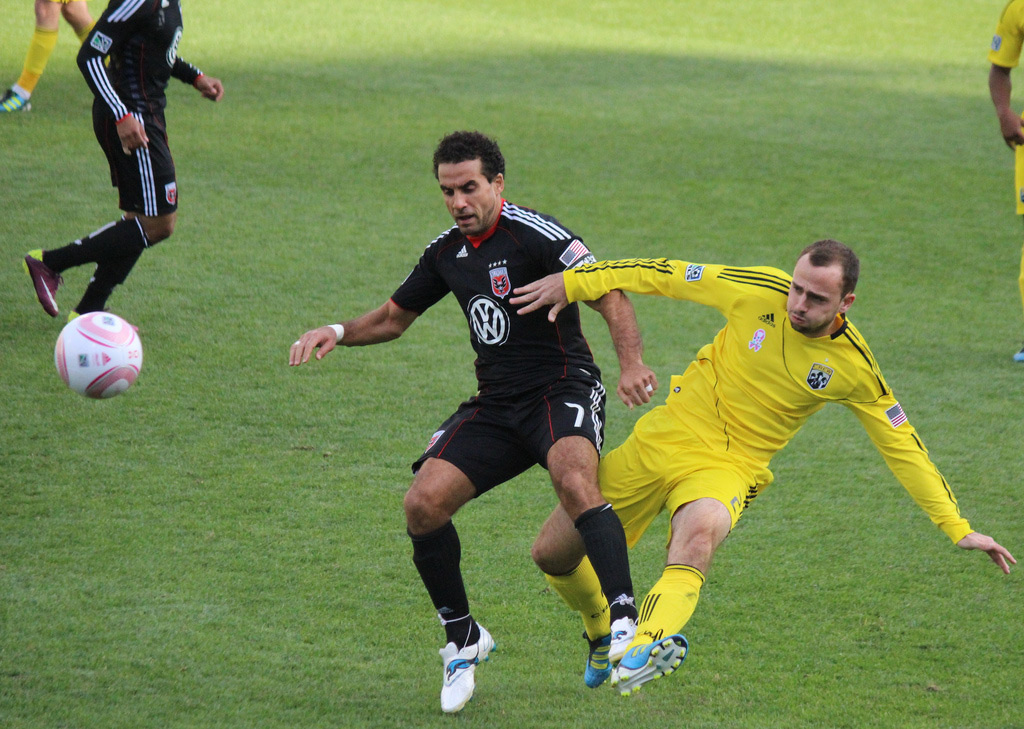
Canadians finally making their mark on MLS
By Sonny Sachdeva, October 20 2015 —
Major League Soccer (MLS) has slowly ascended in the eyes of fans. Once considered little more than a goofy younger brother of historic European leagues like the Premier League, La Liga or the Bundesliga, America’s MLS has garnered more respect recently due to the arrival of legitimate European superstars like Thierry Henry, Kaka and David Villa — albeit well after their primes.
While the United States’ national soccer program is undoubtedly on the rise, having emerged from the depths of international rankings to become a regular World Cup qualifier, the Canadian men’s national team still finds themselves well outside the bubble of legitimate international squads. But that could soon change.
The 2015 season marks a significant step forward for Canadian soccer — most notably in the MLS, where more Canadians will suit up for the league than ever before. Twenty-seven Canadians will don MLS jerseys this year for nine different teams.
Portland Timbers captain Will Johnson headlines the group with Kansas City’s Marcel de Jong and Montreal’s Maxim Tissot. All three suit up for the Canadian national team as well, alongside seven other MLS players.
For a nation that has never made much noise on the international scene — Canada is currently ranked 104th internationally by FIFA — their increased presence in MLS is crucial. It grants emerging Canadian stars a viable place to suit up professionally, considering most of these players aren’t skilled enough to cut it in the top European leagues.
MLS soccer allows Canada’s best to hone their skills in a familiar, competitive setting more akin to their level.
Canadians have had quite an impact on the league in the past. Ontario native Dwayne de Rosario leads the pack. The former midfielder, who suited up for the San Jose Earthquakes, Houston Dynamo, the New York Red Bulls, D.C. United and Toronto F.C., posted 104 goals during his MLS career — the seventh-highest total in league history.
Canada’s presence in the league as a whole has grown over the last decade as well. While Toronto initially remained the league’s lone Canadian club — as is the case in the NBA and MLB — the nation earned two more franchises over the past five years. The Vancouver Whitecaps joined in 2011, and the Montreal Impact did so one year later.
With the red and white gaining momentum both in the North American league and abroad, this trend seems set to continue. The Canadian national team figures to reap the benefits.
Youth participation in soccer has skyrocketed over the past decade in Canada. While nearly all other sports are seeing their annual participation numbers decline, soccer has continued to attract more and more young players. According to Statistics Canada, the percentage of young Canadians playing soccer rose to as high as 20 per cent in the mid-2000’s, topping participation lists among all team sports. That trend has continued, and soccer continues to hold on to that top spot.
There seems to be a clearly established pool of talent growing in Canada. With time, the eager nation could soon begin climbing up the international rankings. That shift has already taken place among the women’s national team, which now sit as the 11th-best team in the world according to FIFA rankings.
It seems absurd to imagine Canada’s men’s team coming anywhere close to that spot, with international titans like Argentina, Brazil, Germany and Spain continuing to reign supreme. But as young Canadians pick up the sport and MLS becomes a more welcoming environment, it seems Canada may finally have the tools necessary to fight their way up the standings and make their presence known.
